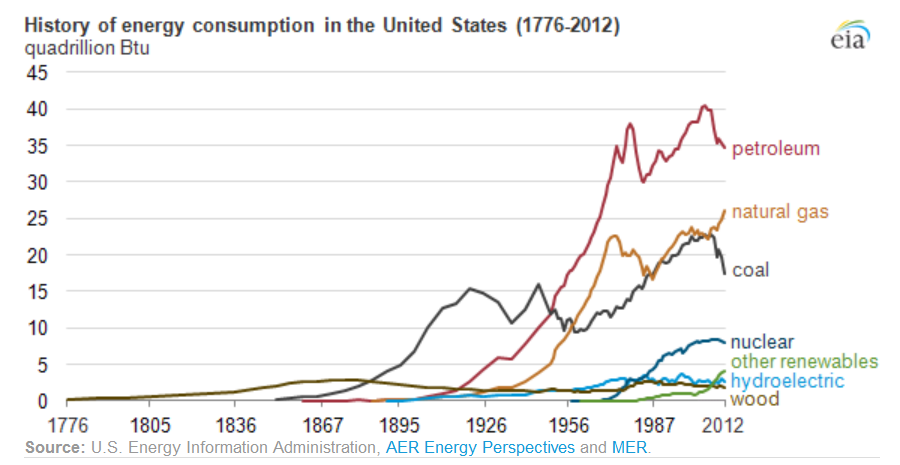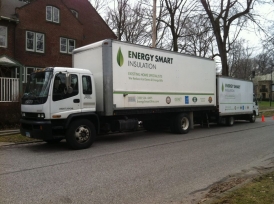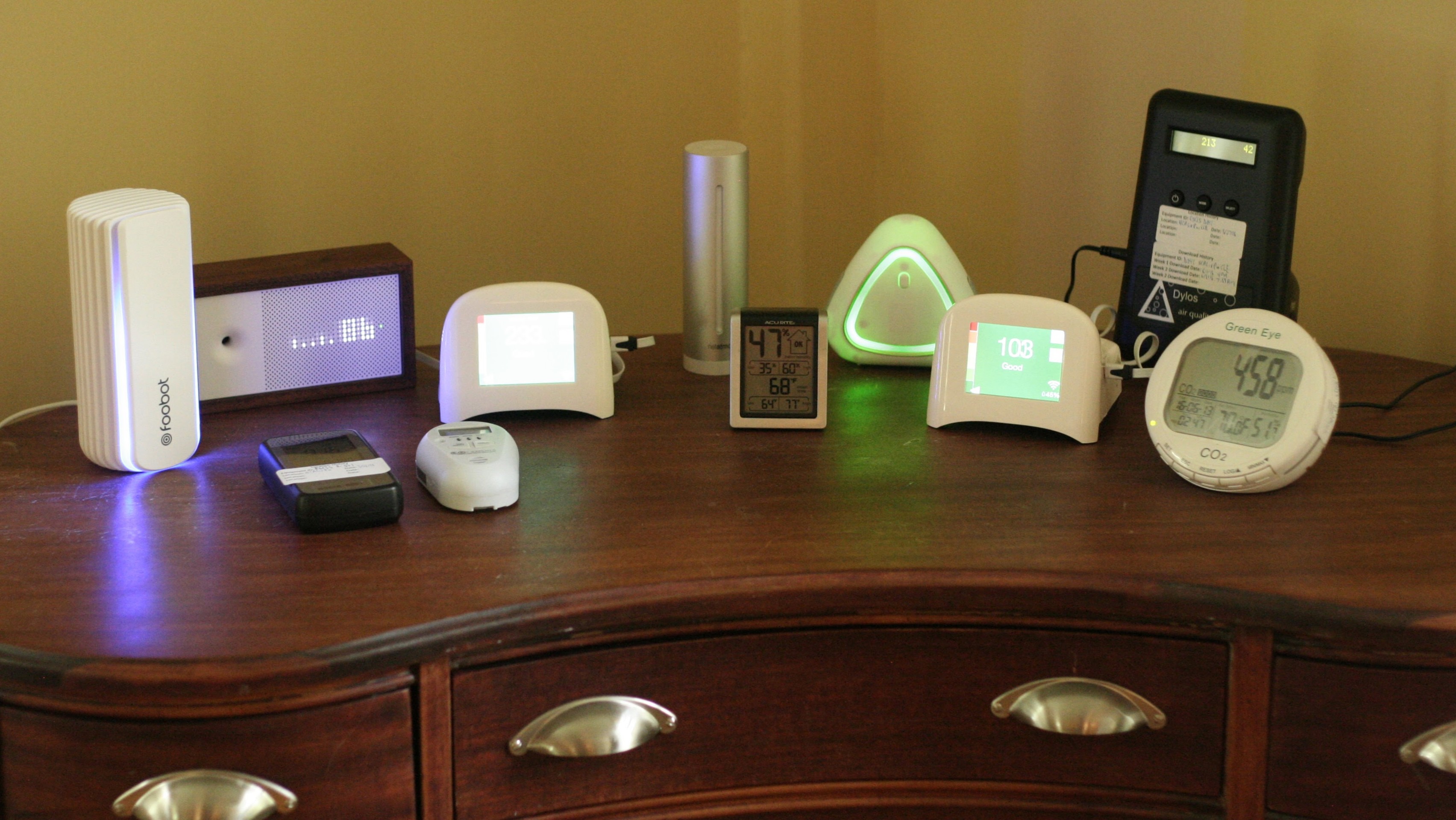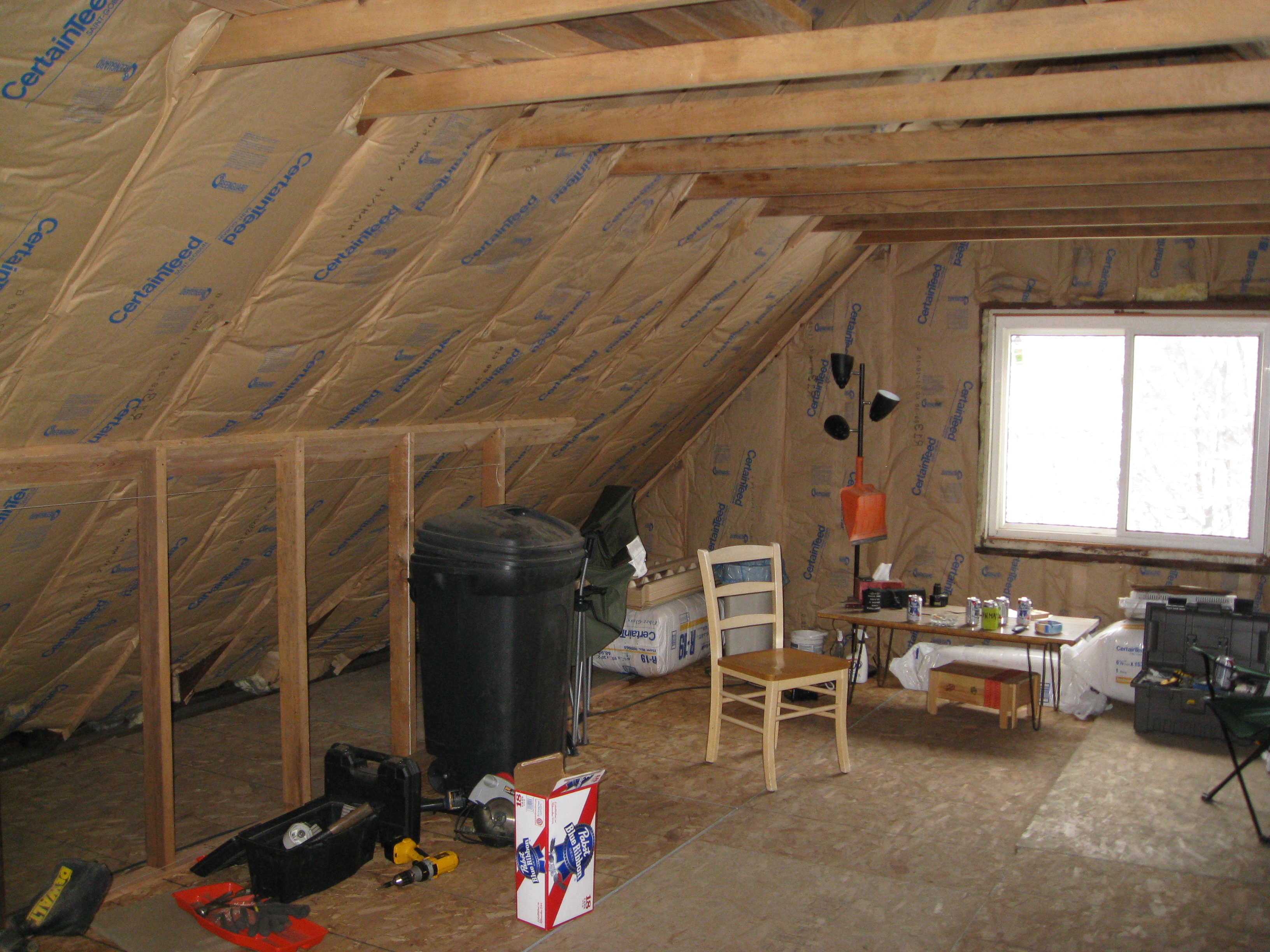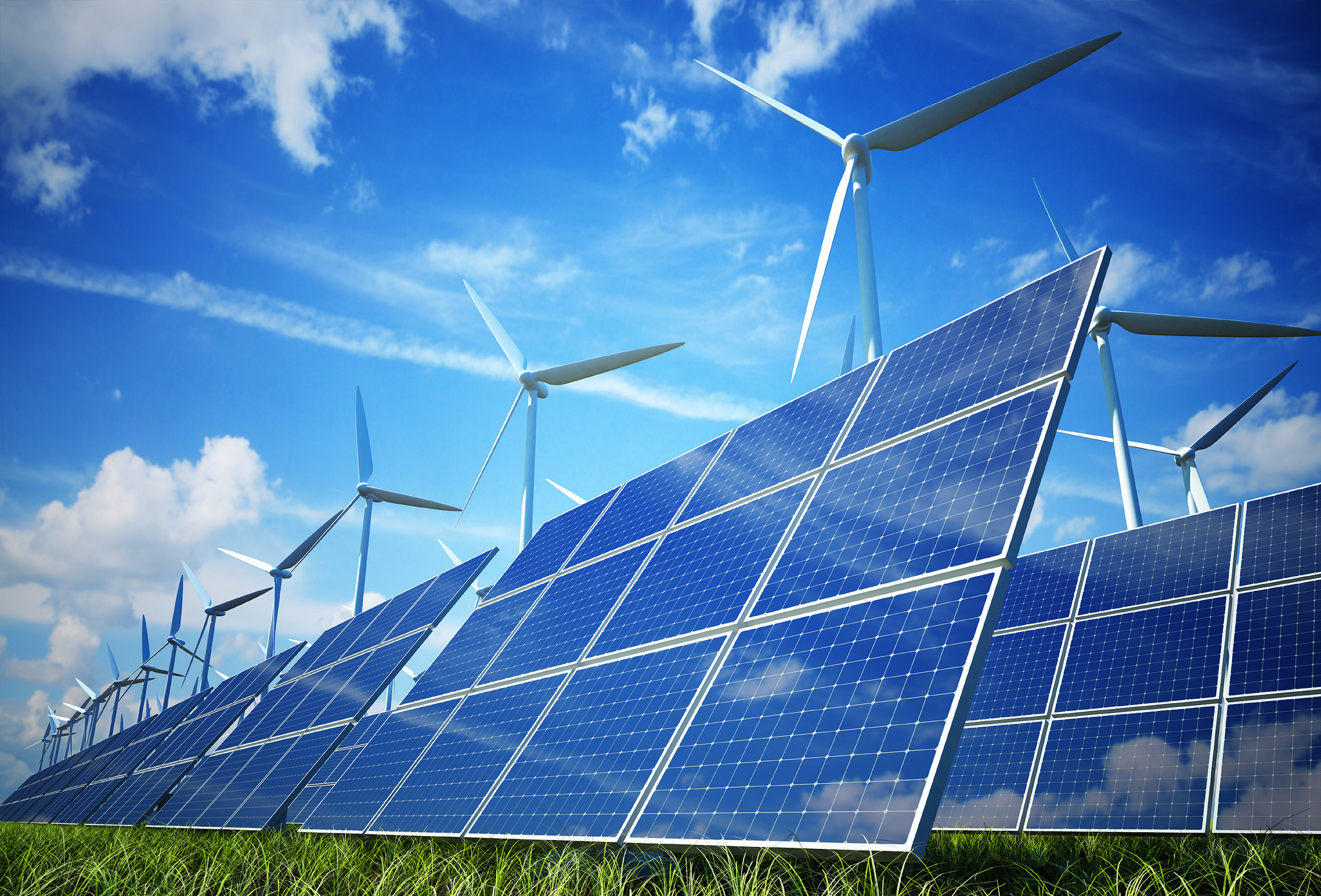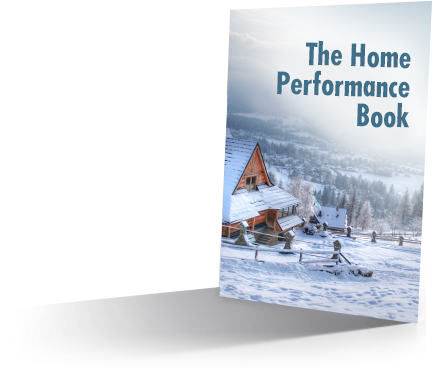Oil Is Dead, and It’s No Big Deal
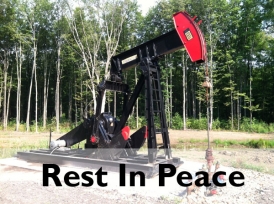
Change is Coming
Watching what’s going on in the world, it’s clear to me that another energy revolution is coming, like it or not. The era of the fossil fuel is ending, and it’s not as scary as we think. I may sound a bit like a green freak, but to me it’s just economics. Renewable energy – solar, wind, and so forth – is going to act as a cap on electricity prices, while fossil fuels will continue to go up in cost. So you can act now, or act later, but we’re all going to need to act – by switching to electricity to heat, cool and power our homes (and maybe cars). The Home Performance industry finds itself right in the middle of this. Yep, I’ve got some ‘splainin to do.
These energy changes have happened before.
For most of human history, we burned wood for heat, cooking, lighting, and other household uses. That transitioned from 1850-1910 to coal – it powered steam locomotive trains, power tools, electric plants, heated our homes, etc. Oil and gasoline took over from 1910-1940 or so, furnaces switched over, we started driving cars, and oil/gas had the advantage of being easily transportable. Electricity got big in the same era as the Western world switched to having a grid. Next up was natural gas, which is what much of the US heats with now. Heating and cooling our buildings is a huge piece of energy use, it’s about half of our residential energy use. And all is hunky-dory, right?
Fossil Fuels Are Going to Get More Expensive
But there’s a problem. Fossil fuels are getting harder to extract, the easy stuff is all gone. More people need higher amounts of energy, which drives costs up. And renewable energy like solar is getting cheaper, nearing the cost of conventional energy. In Spain, they reached price parity with the grid in 2012 without government incentives on large projects, the US is nearly there. The revolution is upon us.
We’re not making much more crude oil than we were 10 years ago, and the cost of doing it is going up. Do you think BP would have had their oil spill in 2010, with a rig in a mile deep of water drilling 18,000 feet down, if there was an easier place to find oil? Or that the fracking method would be being used if there was an easier way to get natural gas out?1
While natural gas remains artificially cheap in the US because we can’t export it to the world, which has much higher prices for it, that won’t last forever, I actually wrote about it in 2012. There are presently arguments in front of Congress about exporting natural gas, made easier by the fact that Russia is acting crazy and threatening Europe’s supply of it. Ships and ports for exporting natural gas are nearly complete, so we will have world priced natural gas in the near future, which could be 2-8 times more than we are paying now.
Oil, as we’ve all felt, has gotten much more expensive in the past decade. I remember freaking out when I paid more than $2/gallon for premium gasoline in 2004. It’s now consistently around $4. (The Brits are paying over $8/gallon.) Extraction costs keep going up, so prices are likely to as well.
And the final straw leading to the death of cheap fossil fuels is India and China. Over 2 billion people are industrializing – that means they will own motorcycles or cars, have air conditioned and heated homes, stay up too late with their electronic gadgets like we do, and enjoy the other niceties of industrialized society. That means they need energy to do it, though, and we aren’t making more oil than we used to. If supply stays the same or goes down, yet demand goes up – price goes up. When will that happen? My guess is in the next 5-10 years, which is within the lifespan of your next furnace.
Electric Is It
All of these factors lead me to believe that it’s time to change where we get our power, heat, and cool for our homes, and probably for our cars, too. And the obvious choice is electricity. Technological advances of this century have made heat pumps more cost effective than gas furnaces. Side benefit? It’s easier to justify the better, more efficient version of a device you use all year. By default this means your cooling costs are lower, too.
Electric cars could be a big piece of the equation, too. In doing the math when considering a new car, I found that the cost of fuel for an electric car is in the $.035-.05/mile range, where for gasoline vehicles it’s in the $.10-$.40/mile range. So powering electric cars is quite cheap, plus they have very few moving parts to break. Once range problems are solved, they’re a great option.
With electricity we have an existing grid for it (yes, it’s in rough shape, but we have one), it’s easy to convert sunlight and wind into it, and we can produce it ourselves at our own homes, unlike natural gas. We also have all the technology we need today to use it on a small scale. Yes, we have a growing storage problem, but in our homes batteries can handle storage, if necessary. Also, as problems get big so does incentive for solutions. I’m confident that when it comes to electricity, there will be no insurmountable problems.
Solar Power – Looking to the Future
Solar has really been getting me excited lately. It used to be ridiculously expensive, 10 times or more the cost of grid power. It’s now quite close in cost to standard sources like coal, natural gas, and nuclear. It also eliminates a curse of going electric – increasing demand for coal fired electricity, which is difficult, dangerous, and environmentally costly to extract – not to mention a dirty burner.2 So where before you had to be a South Park ‘fart sniffer’ (a smug tree hugger) to go solar, now you can make an economic argument for it.3
It also will serve as a cap to energy prices. If you can get solar panels installed for $.15/kwh, how long do you think you’ll pay more than $.15/kwh for? Not everyone will put panels up, but enough are likely to do it to cap electricity prices around the cost of renewables, which will be the cheapest electricity source as fossil fuels continue to get more expensive.
If you hate math, skip to the next paragraph. Trying to find good math on electricity costs is tricky, but retail electric rates range from $.07/kilowatt hour to $.25/kwh. Grid production costs run in the $.03-$.04/kwh range in the US. A smallish scale solar job was just announced for $.04/kwh in Palo Alto, CA. Rough math in my area puts retail costs of solar in the $.12-$.15/kwh range, while grid cost is around $.10/kwh here when you include delivery charges and so forth.
So while it’s not quite perfect here yet, we’re getting close. Other parts of the country are there already. What are the odds that natural gas costs will stay low for 25 years, the life of a solar system? Or oil prices? It’s still a bit of a long term bet today, but with heat pumps being a bit more efficient than natural gas and the ability to power your electric car with it, solar (and electric) is looking pretty cool.
Oil Is Dead, Long Live King Electricity!
With all of these factors in mind – inevitable fossil fuel price increases, heat pumps that work in cold climates, cheap solar, electric cars and so forth – it seems that a switch to electricity to heat, cool, and power our homes (and cars) is very likely. And it’s nothing to be afraid of.
By the way, I’m far from the first one to think this way. Amory Lovins of the Rocky Mountain Institute wrote Reinventing Fire which touches on these ideas. My friend Robert Bean of HealthyHeating.com talks about reserving industrial temperatures from burning fossil fuels for industrial uses, not wasting them where we don’t need 2000 degree temperatures like in our homes. Mike MacFarland of Energy Docs says it’s a bad idea to install a gas furnace in CA because they are oversized for the job. So if I’m crazy, I’m not the first one…
What do you think of my reasoning? Am I nuts? Ahead of my time? Just right? Please tell me below in the comments.
Home Performance Is the Key – And It’s Time for the Pitch
So what will this look like? If we are going to produce our own electricity to power our homes and cars, we want to use as little as possible, because solar panels are typically more expensive than efficiency measures. ‘Reduce before you produce’ is the industry catch phrase.
‘Fixing’ our homes by sealing them up, insulating them better, and installing the smallest, highest efficiency HVAC equipment we can is an awesome path to reducing our energy use – and it delivers a ton of other benefits like a more comfortable, healthier, and longer lasting home. After fixing your home, it becomes much easier to see how big of an array you might need.
The Home Performance industry stands in this gap – we can fix homes and install renewables like solar and wind power.
Energy Smart Home Performance helps you see a path to do all of this – we can help you diagnose your home, build solution packages, and then help you get it done right. Oh, and follow up to see if it worked. We can help you get those solar panels up, too. And it can all be done with today’s technology and contractors.
Curious to learn more? For starters do some reading here on the site, and if you’re ready, you can get an initial consultation, the beginning of our rigorous process.
Get a Substantial Discount on an Initial Consultation by Filling Out This Questionnaire!
Image Credit for US Historical Energy Use: EIA/Wikipedia
1 Full disclosure, I live in Portage County, Ohio, and there are fracking wells within a few miles of my home – and I have groundwater. I’m not a big fracking fan, I feel it is dangerous to mess with our very limited groundwater for short term energy gains – again, it’s economics for me. There have also been numerous earthquakes in Youngstown Ohio, about 25-30 miles from me, that have been linked to frack water disposal wells. Are these risks really worth taking when for a similar cost we can use free energy that doesn’t screw up all sorts of things like our health and environment?
2 I wrote about coal plants last fall, including the little town of Chesire which was literally bought and then razed by an electric utility after myriad health problems turned up in Erin Brockovich fashion.
3 For the full ‘Smug’ South Park episode, where Stan convinces everyone in South Park to buy a hybrid car, click here (it has commercials.)
Get the HVAC Guide

It's free! Make buying a new furnace, air conditioner, or heat pump less stressful.


